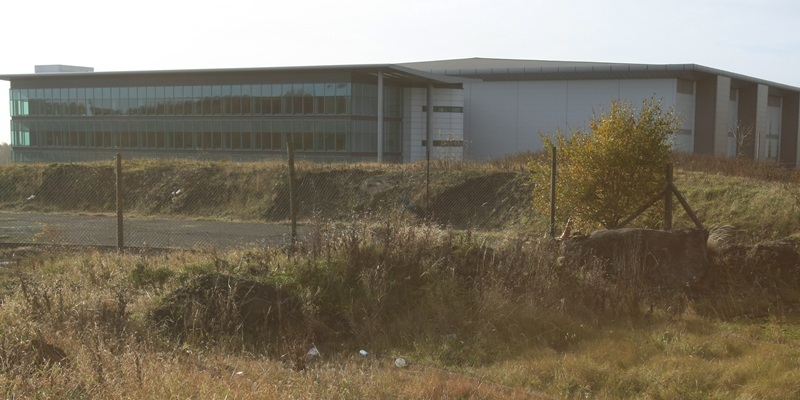The Newcastle firm hoping to breathe life back into the mothballed former Hyundai plant at Halbeath is confident that ploughing more money into the site will reap rewards.
Shepherd Offshore hopes to regenerate the building, unused since it was built 15 years ago, and attract thousands of jobs.
Contractors have moved in to get it ready for a mixture of office use and manufacturing.
Offices at the site are being retained but the rest is being pulled down because it was built for manufacturing semiconductor components.
The company’s decision to come to Fife was influenced by the region’s role in Scotland’s renewable energy industry, as well as proximity to transport links including the M90, rail routes, the Rosyth ferry terminal and the new Forth crossing.
It believes the site will be key to the firm’s “wider strategy to become world leaders in the renewable energy and sub-sea sector.”
Having already created around 2000 jobs from investments south of the border, Shepherd Offshore said it could do the same in Fife.
Director of business development Andy Williamson said investing in the site was a gamble worth taking.
He said, “We’ve created almost 2000 jobs to date in Newcastle through major regeneration.
“We’ve got the support of Scottish Enterprise and Fife Council, so there’s no reason that can’t be the case up in Scotland.”
He added, “We’re looking to attract credible organisations that have a long-term view and will provide sustainable employment for the area.”
Built in 1997, the semi-conductor plant on the outskirts of Dunfermline failed to produce a single microchip and has sat empty ever since, despite repeated attempts to find a use for it.
Mr Williamson would not reveal how much was being spent on revamping the building but said it was a “considerable sum.”
He said, “We’ve taken a risk on because it’s quite a specific facility, but we’re pretty confident because it’s in a good location and there are excellent road links.
“Effectively what we have is a brand new facility and I think it is a great shame for the area that up until now its potential was never realised.”
Initially mothballed because of the Korean economic crisis in 1997, the site looked like it was saved in 2000, when Motorola bought it for £1.3 billion.
Despite fresh hopes of hundreds of new jobs, however, it was put on the market by Motorola subsidiary Freescale Semiconductor in 2007 a move that reflected outsourcing of electronics manufacturing to Eastern Europe and the Far East.
Dunfermline and West Fife MP Thomas Docherty welcomed the work and consultation.
He said after 15 years of “false dawns” something finally appeared to be happening.
Mr Docherty said, “It’s really important that my constituents take this opportunity to have their say. Seeing the building coming down is a forward step in itself. I’m hugely positive about it.
“This is a long-term project with the potential to create thousands of jobs in the coming years. What’s important is that this investment is all private money. No taxpayer money is going into this project. It’s their risk.”
